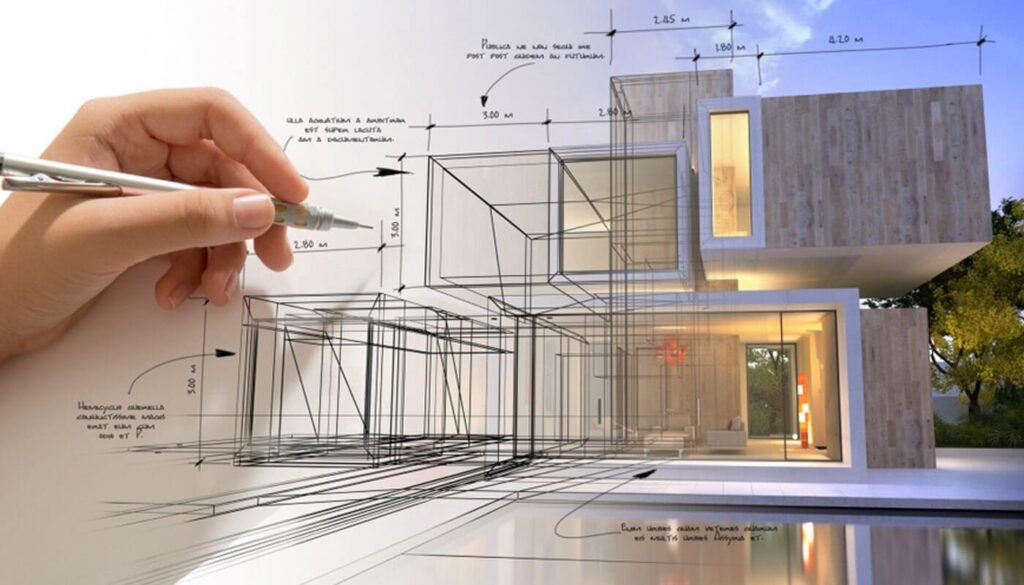The Creative Refine Behind Successful Tasks from CDA Architects
The Creative Refine Behind Successful Tasks from CDA Architects
Blog Article
Comprehending the Collaborative Process In Between Engineers and Designers in Modern Building And Construction Projects
The joint process in between architects and engineers is important in contemporary construction projects, as it balances style intent with design feasibility. Discovering these characteristics reveals insights that can considerably affect task results and total market standards.
The Relevance of Collaboration
The joint harmony between architects and engineers is necessary for the successful awareness of any construction task. This collaboration combines distinct knowledge and point of views, allowing the combination of cutting-edge style with sensible design solutions. By collaborating, architects and designers can ensure that a job not just fulfills visual and practical demands yet also complies with security, sustainability, and monetary restraints.
Collaboration fosters a common vision, assisting in the placement of goals and assumptions from the beginning. This placement is critical in addressing prospective challenges and mitigating risks that can arise throughout the job lifecycle. A collective strategy allows for the efficient appropriation of sources, optimizing both time and cost.
The value of partnership includes the iterative process of style and building, where comments from designers can inform architectural decisions, resulting in even more feasible and lasting styles. Conversely, architects can influence engineers to assume artistically regarding just how to accomplish structural integrity without endangering artistic intent. Inevitably, the joint partnership between designers and designers is not just advantageous; it is basic to the creation of high-quality, practical, and innovative constructed environments that fulfill the demands of society.
Communication Techniques and Tools
Effective communication techniques and devices are vital for promoting partnership between architects and designers throughout the task lifecycle. Establishing clear channels of interaction is vital to make certain that all employee are straightened with project goals, timelines, and duties. Regular conferences, both in-person and virtual, provide possibilities for stakeholders to discuss progression, address issues, and make notified choices.

Additionally, embracing collaborative interaction devices, such as Slack or Microsoft Teams, enables immediate messaging, file sharing, and recurring discussions, promoting a more active reaction to arising problems. Document monitoring systems likewise play a crucial role in organizing project documentation, guaranteeing that all group participants have access to the most up to date info.
Shared Goals and Job Vision
A linked task vision serves as the foundation for successful collaboration between engineers and designers (cda architects). This common vision not only aligns the initiatives of both parties yet likewise establishes an usual structure for decision-making throughout the project's lifecycle. By articulating clear goals, stakeholders can effectively browse the intricacies of modern-day building and construction projects, making sure that both aesthetic and useful demands are satisfied
Developing shared goals includes open discussion and an extensive understanding of each discipline's payments. Engineers generally concentrate on style intent, spatial partnerships, and user experience, while engineers highlight structural integrity, systems functionality, and compliance with policies. When these point of views are aligned, the outcome is a natural project that sticks to both creative aspirations and technical feasibility.
In addition, a distinct task vision promotes responsibility amongst staff member, motivating each individual to take ownership of their function in achieving the wanted end weblink result. Routine check-ins and joint workshops can even more strengthen this dedication, permitting changes to be made as the project evolves. Eventually, a shared vision not just enhances synergy but also elevates the top quality of the last deliverable, bring about effective job completion.
The Duty of Modern Technology
Leveraging technology has become essential in enhancing collaboration in between engineers and engineers. The integration of advanced software application tools helps with real-time communication and information sharing, enabling teams to work much more efficiently and properly. Structure Details Modeling (BIM) stands apart as a crucial technology, permitting both engineers and designers to produce comprehensive check out here 3D versions that envelop design intent and structural stability. This shared graph minimizes misunderstandings and simplifies the decision-making procedure.
Additionally, cloud-based platforms make it possible for seamless collaboration, enabling job stakeholders to accessibility and upgrade job data from anywhere. This fosters a culture of transparency and accountability, as modifications can be tracked and assessed in real-time. Additionally, mobile applications additional boost interaction, providing on-site groups with instant accessibility to project requirements and updates.
Emerging modern technologies such as expert system and artificial intelligence are likewise beginning to contribute in predictive analysis, helping groups determine prospective problems prior to they emerge. Inevitably, the duty of technology in architecture-engineering partnership not only improves workflow performances yet additionally enhances innovation, leading to more effective project results. By embracing these technical innovations, architects and engineers can make sure a more cohesive and effective joint procedure throughout the construction lifecycle.
Situation Research Studies in Successful Partnerships
Many instance studies show the extensive effect of effective partnerships between designers and designers on job end results. One notable example is the collaboration on the High Line in New York City City, where landscape engineers, designers, and metropolitan coordinators functioned with each other to change an abandoned rail line into a vivid public park. This multidisciplinary approach not just enhanced the aesthetic quality however likewise ensured architectural safety and security and ecological sustainability.

The Burj Khalifa in Dubai further demonstrates the relevance of collective initiatives - cda architects. The integration of architecture and engineering competence enabled the job team to accomplish unmatched elevations while sticking to safety regulations and aesthetic vision
These instances underscore the value of interaction, trust, and shared objectives. In today's intricate building and construction setting, such partnerships are important to browsing obstacles and delivering projects that fulfill both functional and visionary objectives.
Conclusion
In verdict, the collaboration in between engineers and engineers is necessary for the success of modern building page and construction projects. Reliable communication methods, a common project vision, and the assimilation of innovative modern technologies are crucial elements that promote this partnership.
Report this page